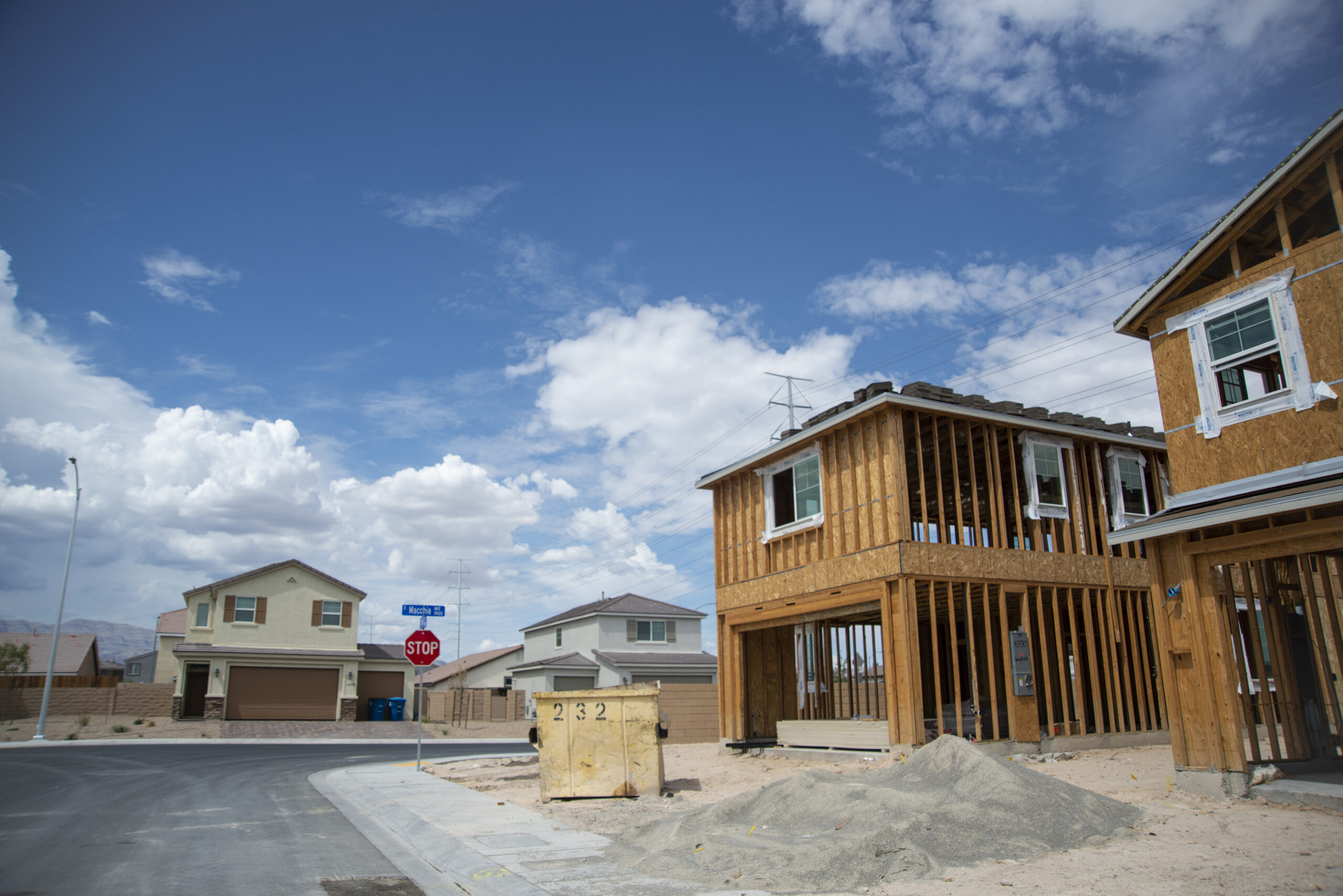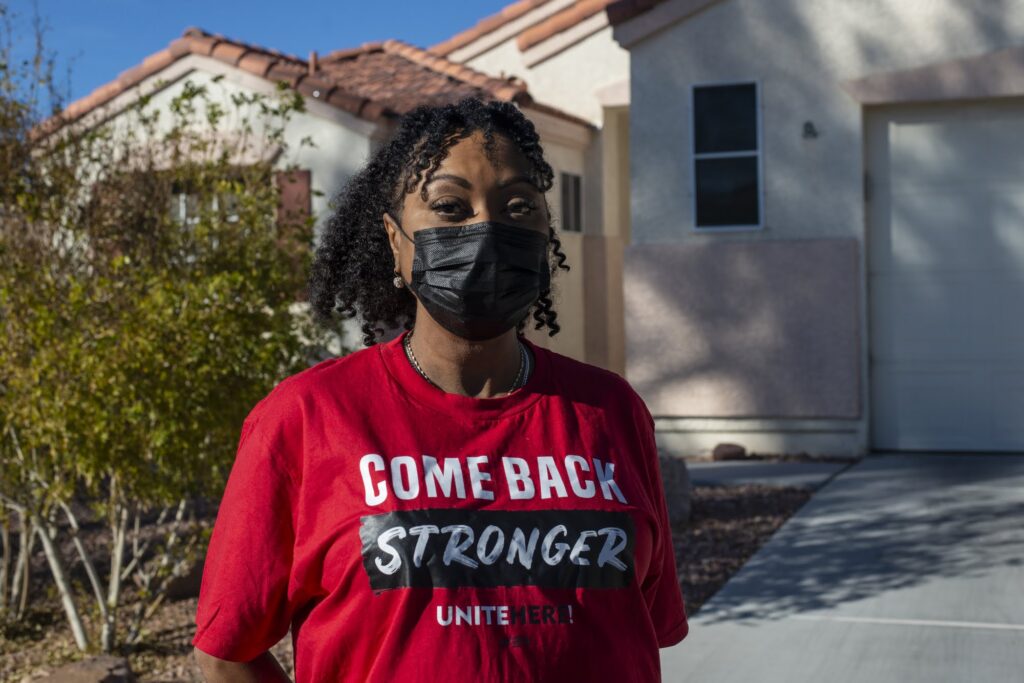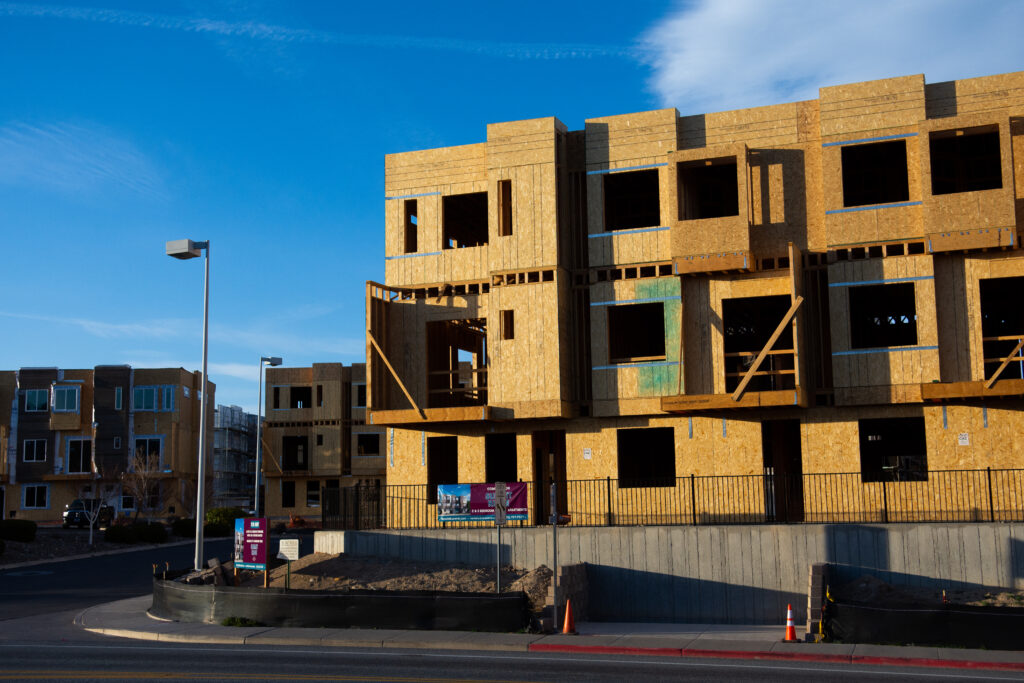Nevadans grapple with punishing rent hikes even as economy rebounds

Nearly every morning for the last 27 years, Carlos Padilla would slip on his white double-buttoned pastry chef uniform, lace up his non-slip black kitchen shoes and head to work at the Treasure Island Hotel and Casino on the Las Vegas Strip.
But when the pandemic hit, Padilla went from a full-time position to unemployed, leaving his uniform in the closet until the casino reopened months later and he returned part time.
Even as Padilla and his wife and two children pinched pennies, rising grocery and gas expenses, COVID hospital bills and a more than $300 increase in rent over the last year forced the family to dip into savings intended for a future down payment.
The family looked for alternatives after their landlord said rent would increase by another $200 to a little more than $1,600 a month, but couldn’t find a cheaper place and re-signed for another 18 months.
“We’re hoping that things get a lot better between now and [the end of the lease],” he said.
Though Gov. Steve Sisolak and other state leaders have touted Nevada as having the nation’s best economic momentum out of the pandemic, many residents, including Padilla, are struggling to make ends meet amid a steep rise in rental and home prices.
Rental prices in Nevada’s two largest cities have grown faster than the national average. As of February, rental platform Zumper reports that the average rent for a one-bedroom apartment is $1,250 in Las Vegas and $1,275 in Reno, a 24 percent increase and 19 percent increase compared with prices a year ago, respectively.
The general benchmark for affordable housing is housing that costs no more than 30 percent of a person’s gross income, or earnings before taxes or other deductions. To afford the median one-bedroom apartment rent in Las Vegas, a household would need to make $50,000 a year. In Reno, that yearly income would have to be $51,000.
Census data indicates the area median incomes for Las Vegas and Reno are just a few thousand dollars above those figures, meaning almost half of households make less than that.
Financial pressure from increased rent prices has been compounded by inflation. From December 2020 to December 2021, reports from the Bureau of Labor Statistics show that consumer prices for all items rose 7 percent, the highest yearly percent change in more than 40 years.
Rental price hikes have been jarring relative to what people were paying only a few years ago. Over the last five years, historical rental data from Zumper shows that a one-bedroom apartment in Las Vegas went from a median of $755 a month to $1,250, up nearly 66 percent. For the same timeframe in Reno, one-bedroom apartment prices have increased almost 91 percent from a median of $668 a month in January 2017.
Still, the prices are in line with rising rent costs across the West Coast and the country, said Susy Vasquez, president of the Nevada State Apartment Association.
Zumper’s annual rent report indicates that across the country, the median rent for a one-bedroom apartment rose 11.6 percent from 2020 to 2021.
Vasquez attributed the rising rental costs in Nevada to two factors: a lack of inventory and an increase in remote job opportunities allowing people to work virtually for companies based in states that pay higher wages relative to Nevada. She said the association projected a 15 percent apartment vacancy rate in the Reno-Sparks area beginning in 2020, but as remote work became a possibility, that prediction fell through and the income of people looking to rent increased significantly, driving up the overall rental prices and demand.
Along with supply shortages, wages and incomes in Northern Nevada have increased, said Brian Bonnenfant, project manager for UNR’s Center for Regional Studies. He said a tendency for higher-income-earning residents to move into apartments independently instead of cohabitating also likely plays a role in the dearth of apartments.
He attributed the rise in income levels to companies such as Tesla and Switch and said that low apartment vacancy rates in spite of the price increases show that the market is sustainable for now.
“We’re seeing wages and income really on the increase over the last five years across the board, especially if you work in the tri-center [Tahoe-Reno Industrial Complex],” he said.
In addition to the increase in remote workers, Southern Nevada’s rental market is affected by inventory shortages, increasing costs of purchasing a home and a lack of infrastructure to support housing that might expand city boundaries, Southern Nevada Home Builders Association CEO Nat Hodgson said last year. As prices of building materials escalated and supply chain problems complicated construction timelines, there was a gap between what buildings cost to construct and maintain and what renters could afford.
As companies return to in-person modes of work, Vasquez said landlords across the state are watching to see whether renters are breaking leases and how that may affect the market.
Even amid a growing class of remote workers and higher wages, steep housing prices are still a major burden for low-income and extremely low-income renters. Analyses by the National Low Income Housing Coalition estimate roughly 21 percent of renter households across Nevada have extremely low income or less than $25,750 for a household of four. The annual household income needed to afford a two-bedroom rental home at the U.S. Department of Housing and Urban Development’s fair market rent price is $45,416.
The coalition’s research indicates a shortage of more than 84,000 affordable units available to extremely low-income renters in Nevada.
Wages are not increasing enough to keep pace with the escalating cost of housing, which creates an opportunity to capitalize on a captive market of renters who cannot qualify for a home purchase and have nowhere else to go, said Quentin Savwoir, deputy director for the community advocacy group Make it Work Nevada.
Savwoir attributed the rising rent costs in part to a “gross overreach of greed” and a lack of tenant protections, which allows landlords to raise rents to whatever degree they want. He pointed to a newsletter sent by the Nevada Realtors in August under the headline “Raise the Roof: No Rent Caps in Nevada” as an example of landlords’ ability to raise rent with no penalty or regulation.
“We brag extremely hard about being proud of how much we love our state, how this is a world-class city,” Savwoir said. “But we've divested in families for decades, and we continue to allow this power dynamic to be out of whack, such that we have seniors calling, telling me that they're going to be moving out of their house to live in their car.”

‘For those that fall in between, it's really challenging’
Aretha Wilder, 52, works as a cocktail waitress at the Flamingo casino. As she carries a tray of drinks through the casino, weaving in and out of groups of people, her thoughts turn to her friends and coworkers who, like herself, are facing uncertain housing situations.
One of her friends moved in with a boyfriend. When the relationship ended, her friend was stuck cohabitating with him until she could find her own place.
Another cocktail waitress had her rent increase by $300. Wilder’s best friend is struggling to pay an extra $150 her landlord just tacked onto her rent. Recently, her sister received a $115 rent increase notice.
It worries Wilder, too. She is a renter who makes less than the city’s area median income because the casino cut her hours during the pandemic and has not reinstated her full-time. Under HUD’s income brackets, she is considered low income, and for her current rent to meet affordable standards, she would need to make almost $43,000 more than she does now.
Rent in Las Vegas has become an undercurrent in conversations with family, friends and coworkers.
“The conversation is ‘It's not where am I going to live? Period. It's ‘where am I going to live for this year?’” Wilder said. “Now we're starting to understand that we're going to have to move from place to place to place.”
Vasquez said she and the apartment association saw families bundling under one roof during the pandemic to save costs. The multi-family living situations allowed some to maintain savings, but it does not necessarily mean someone moving out can afford rent, even for those who managed to set aside money.
There’s some funding available for those who fall into extremely low-income brackets. Still, many people end up caught in the middle, and have few options other than to wait for the market to cool.
“There's money to build low-income housing tax credit properties and affordable housing, and there's money to build luxury apartments,” Vasquez said. “But for those that fall in between, it's really challenging because there's not a tax credit that can help them.”
Savwoir said he has lived through three economic bailouts aimed at helping large businesses and banks survive during economically tenuous times. But now, as families struggle to remain in their homes, he said no one knows who to turn to or whether solutions should come from the state or a local government.
“It just seems like an incredible policy failure that this singular universal need, we haven't been able to figure out how we make that more accessible for everyone,” he said. “Housing is very much the wild wild west out here. You can just do what you want.”
The pandemic put Wilder out of work for almost a year. Despite her elongated unemployment, she managed to make all her rent payments, but after her landlord notified her she was selling the house where Wilder and her mother live, she struggled to find options.
She was approved for a $350,000 home loan through the Culinary Union’s housing purchase assistance program. Though she’s put in more than four offers, all of them have fallen through.
“You would think for a quarter million dollars you could find something, right?” she said, her voice rising in disbelief.
Wilder’s mother is disabled, so it’s vital for her to find a place without stairs and where she can fit a special bed. With less than three weeks left until her current home is sold, Wilder has had to pause the house hunt and is now looking to rent.
“I don’t know what I’m going to do,” she said. “I feel betrayed. I feel like this is my town. I’m from here … and we can’t afford to live here.”
Like Wilder, many renters who want to buy a house have been kept out of the market amid a double-digit increase in home prices. Home prices in Nevada's two largest metropolitan areas rose more than 23 percent in Las Vegas and roughly 22 percent in the Reno-Sparks area over the last year.
Bonnenfant said anyone looking to purchase a home in Washoe County needs a six-figure income. Others will have to rent.
‘It’s going to take time’
In Northern Nevada, 25-year-old Anna Gustafson splits her time between her parents’ place in Carson City and her boyfriend’s studio at a Siegel Suites in Reno, where rent increased by 20 percent in February.
Gustafson is trying to pay back the debt she accrued during the pandemic, take care of her son from a previous relationship and keep up with the costs of doing business as a massage therapist. All of that means finding an affordable apartment is out of reach.
“We just started looking into getting an actual apartment, and the cheapest that we can find is $1,450 for a two-bedroom, one-bath in South Reno,” Gustafson said. “There’s nothing really out there that we can go ahead and move into and have it be affordable. It’s basically impossible.”
Local apartment vacancy rates continue to decline, with the average vacancy rate during the third quarter of 2021 at 3.9 percent, according to a report from the Nevada State Apartment Association. That was down from 5.4 percent during the same quarter in 2020.
Vasquez said new apartment stock is coming online, but renters are likely to experience move-in and renewal specials rather than rent decreases. The report also showed 2,006 apartment units under construction during the third quarter of 2021 in the Reno-Sparks area, up from 1,384 units under construction the previous quarter.
In Las Vegas, apartment construction slowed during the pandemic but has picked up with more than 6,300 apartment units under construction during the third quarter, an increase from 3,800 units.
Vasquez said she and others are looking to American Rescue Plan Act dollars to help make affordable housing available, but it will take some time to get projects online.
For Bonnenfant, inventory is key.
“The solution, at the end of the day, is adding more inventory,” he said. “That is a solution, and it’s happening.”
But Savwoir believes policymakers need to go further than balancing out the supply-and-demand equation.
“There absolutely is a shortage,” he said. “But there has to be two trains leaving the station at the same time. We have to increase affordable housing stock, and we have to expand tenants' rights. And unfortunately, we’ve got to figure out how we multitask.”

Meanwhile, Padilla is still worrying about the immediate future and how he is going to take care of his family on his reduced hours as a pastry chef.
The financial stress has taken a toll on his body. His wife and two children have noticed his weight gain, and his hair has gone white.
Though his family is managing, he said one unexpected bill could leave the family deciding what not to pay. He knows he is not alone.
“There’s still thousands of people that are like myself that are not back to their full capacity as far as rent wise or they’re not making what they used to make before the pandemic,” Padilla said. “So it’s making it harder for people to acquire housing or something affordable.”
This story was updated on Monday, Feb. 14, 2022, at 9:45 am to clarify that Aretha Wilder's employment status is part-time.
